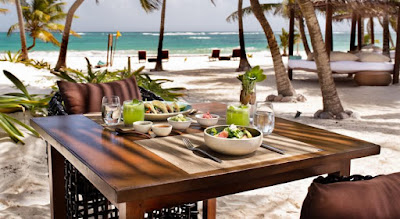Mukan Resort South of Tulum 4.5-star
Punta Allen Beachfront Hotel with Spa Outdoor Pool Hotel Only or All Inclusive
Main amenities
- 9 guestrooms
- On the beach
- Restaurant and bar/lounge
- Full-service spa
- Outdoor pool
- Breakfast available
- Beach sun loungers
- Airport shuttle
- Terrace
- Coffee/tea in a common area
- Air conditioning
- Daily housekeeping
- Free WiFi and free parking
For families +12 years old
- Private bathroom
- Free toiletries
- Garden
- Terrace
- Daily housekeeping
- Iron/ironing board
What’s around
- On the beach
- Sian Ka'an Biosphere Reserve - 1 min walk
- Sol Caribe Beach - 1 min walk
- Punta Allen Park - 5.7 mi / 9.1 km
- Punta Allen Dock - 5.7 mi / 9.2 km
- Tulum Beach - 20.9 mi / 33.6 km
- Tulum Mayan Ruins - 27.8 mi / 44.8 km
- Tulum National Park - 27.8 mi / 44.8 km
- Blanquizal Punta Allen 5.7 mi / 9.1 km
Key facts
Hotel size
- This hotel has 9 rooms
- This hotel is arranged over 2 floors
Arriving/leaving
75% of customers were happy with check-in
- Check-in time 3 PM-10:30 PM
- Check-out time is noon
Required at check in
- Credit card or cash deposit required
- Government-issued photo ID required
- Minimum check-in age is 18
Travelling with others
Children
- Children (11 years old and younger) not allowed
- No cribs (infant beds)
Pets
- Pets not allowed
Internet
- Free WiFi in public areas
- Free WiFi in rooms
All inclusive
- All-inclusive room rates at Mukan Resort, South of Tulum are available. These rates are higher because they include onsite food and beverages in the room rate (some restrictions may apply).
- Meals, snacks, and beverages included
- Room service during certain hours
- Premium and/or non-domestic beverages
- Alcoholic beverages
- Airport transfers
- Childcare
- Laundry/dry cleaning services
- Spa/beauty facilities and services
- Activities and services offered by independent operators
- Offsite tours
- Transportation to offsite activities
- Gratuities
- Taxes
Spa
- Guests can indulge in a pampering treatment at the hotel's full-service spa, Spa Hunab Ku. Massages are available on the beach and in the spa; other services include deep-tissue massages, hot stone massages, and Swedish massages.
Dining
- Onsite venue - This restaurant specializes in local and international cuisine and serves breakfast, lunch, and dinner. Guests can enjoy drinks at the bar. Open daily.
- Cigar Bar - Onsite bar. Open daily.
Also known as
- KanXuk Luxury Resort Punta Allen
- KanXuk Luxury Punta Allen
- luxury all inclusive resorts in tulum
- Luxury resorts in tulum
- Luxury resorts in punta allen
- high end resorts in tulum
- Top luxury resorts in tulum
- Most luxurious resorts in tulum
- mukan resort
- mukan resort tulum
- hotels in punta allen
Policies
- Transfers via airport shuttle are required and must be arranged at least 24 hours before travel by contacting the property at the number on the booking confirmation.
- For transfers, guests must contact the property before arrival at the number on the booking confirmation.
Optional extras
- Full breakfast is offered for an extra charge of USD 35 for adults and USD 20 for children (approximately)
- Airport shuttle service is offered for an extra charge of USD 325 per vehicle (one-way)





























